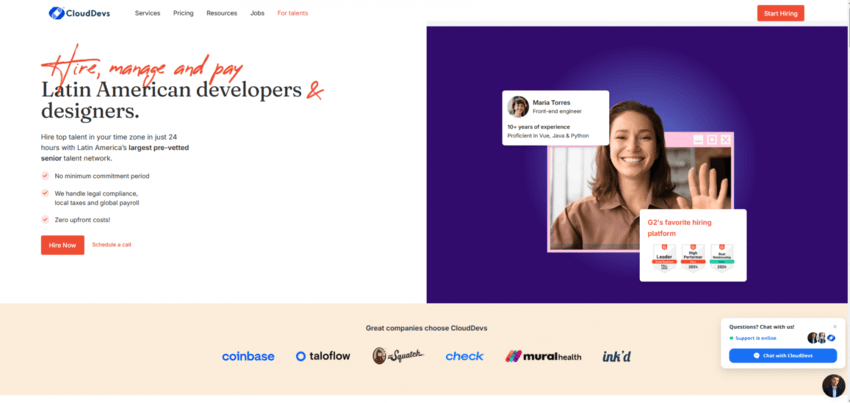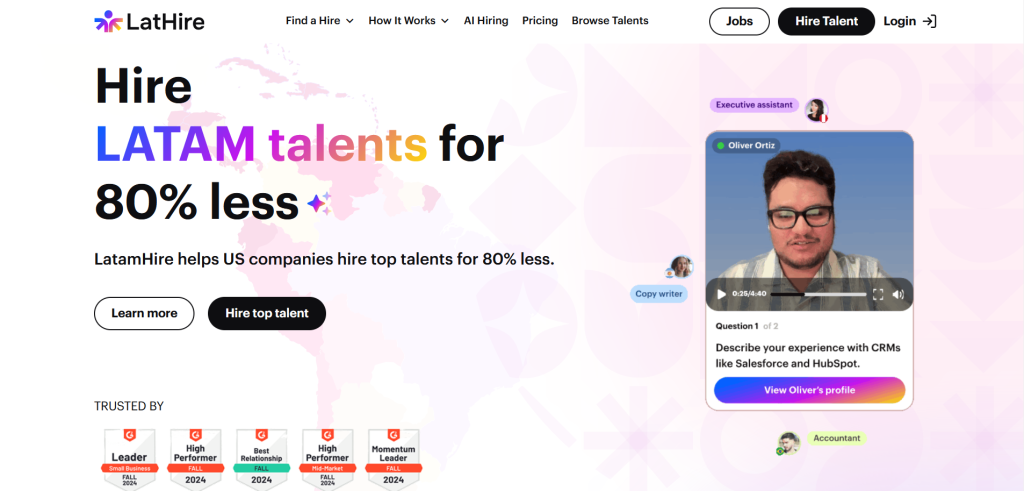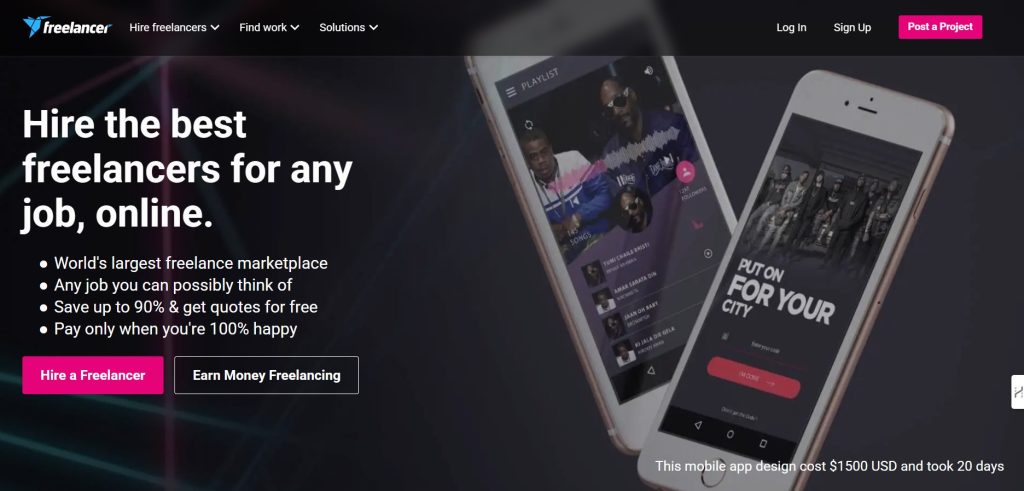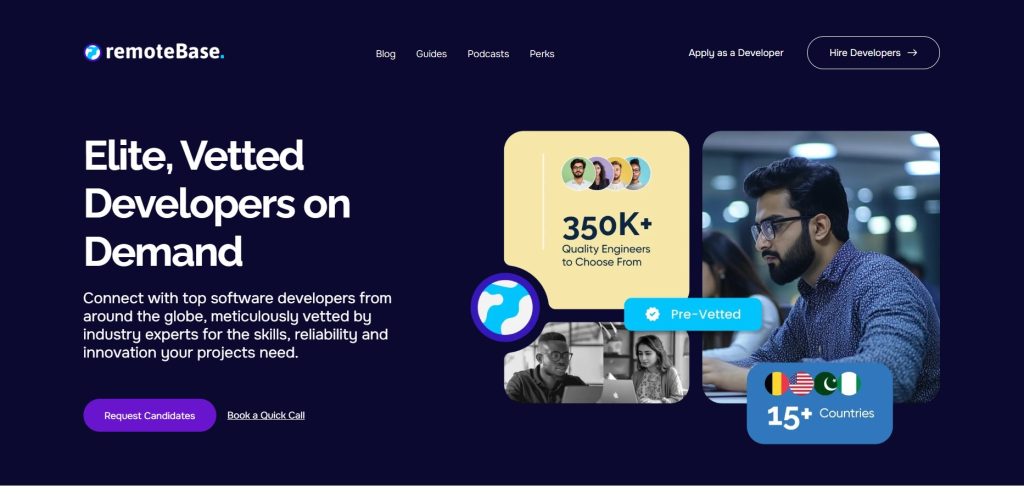
What Is Nearshore Software Development Outsourcing? Nearshore software development means hiring a team in a neighboring country. For the US, nearshore software development companies typically point towards those in Latin America. This approach emphasizes geographic and cultural proximity: nearshore partners work in similar time zones and often share language skills, so communication flows more smoothly. In practice, nearshoring lets you treat the remote team as an extension of your own, reducing delays and misunderstandings. It’s often called the “sweet spot” between onshore and offshore: you get major cost savings without sacrificing collaboration quality.
Startups and recruiters should note that nearshoring is a growing trend: by 2025, about 80% of North American companies are exploring nearshore dev teams. These teams are 46% cheaper on average than US-based hires, yet they still overlap work hours with U.S. business time and bring up-to-date technical skills. In short, nearshore partners can fill critical talent gaps quickly while maintaining high standards.
These benefits, cultural alignment, cost savings, and abundant talent, make nearshore the ideal model for US startups and recruiters looking to grow their development capabilities.
When picking a nearshore software development vendor or staffing partner, follow these guidelines:
By carefully evaluating experience, processes, and policies, you’ll find a nearshore partner that fits your startup’s needs and culture.
The best choice depends on your project, team size, and preferred engagement model. The companies below are listed in no particular order; each has a strong reputation in nearshore development:

A Latin America–focused talent platform. CloudDevs boasts over 500,000 pre-vetted LATAM developers and guarantees 100% time-zone overlap with U.S. teams. You can hire senior engineers, designers or full teams in as little as 24 hours, with cost savings up to 60%. The emphasis is on speed and fit – their platform matches you quickly with developers vetted for both skills and English fluency.

A Latin America–focused talent platform. LatHire boasts over 800,000 pre‑vetted professionals spanning technical and non‑technical roles and ensures seamless time‑zone alignment with U.S. companies. You can hire engineers, designers, marketers, HR specialists, or full teams within 24 hours, with cost savings up to 80 %. Powered by AI‑driven matching and rigorous vetting for skills and English fluency, LatHire streamlines your hiring process, with no upfront fees until you make a hire.
A global marketplace of top freelancers. Toptal accepts only the top ~3% of applicants after rigorous screening. It offers software engineers, designers, finance experts, and more. Companies can interview candidates within ~24 hours and usually make hires in under 48 hours. This makes Toptal a great option if you need highly skilled talent fast, knowing you’re getting elite professionals.

A managed services platform for custom software. Gigster combines an AI-driven engine with human project management to deliver tailored solutions. It maintains a network of 50,000+ rigorously-vetted developers and designers worldwide. Clients engage Gigster to take projects from ideation through launch; Gigster assembles and supervises the team to ensure timely delivery with quality code.

A subsidiary of Codementor that uses AI to match firms with remote developers worldwide. Arc’s platform curates top-tier talent using its HireAI engine. It offers both freelance and full-time remote hires, emphasizing long-term fits. The vetting process (live interviews, coding tests) is strict, and Arc supports 2-week trials. (Arc is noted for sourcing many developers from Latin America for U.S. companies.)

The largest global freelance marketplace. Upwork connects businesses with millions of freelancers in virtually every skill area. You can filter by region (e.g. Latin America) to hire nearshore. Upwork’s platform handles job posting, interviewing, and payments. As Upwork puts it, it “connects clients in need to freelancers who deliver”, making it easy to browse and hire independent developers or teams on flexible terms.

A popular freelance services marketplace. Fiverr is a global platform offering everything from quick gigs to long-term contracts. It’s especially known for graphics and small tasks, but also has many software developers. On Fiverr you can post a project (or buy a “Gig”) to find nearshore talent at a wide range of price points. Its massive user base (from ~160 countries) ensures a broad talent pool for almost any need.

Another major freelancing site. Freelancer hosts over 50 million users across 1,800 skill categories. You can post jobs and receive bids from developers worldwide, including Latin America. Like Upwork, it’s self-service: you’re responsible for vetting candidates. It’s a cost-effective option when you have the bandwidth to manage the hiring process directly.

A U.S.-based talent platform for software engineers. Gun.io’s pitch is “find talent, hire with confidence, work seamlessly”. It focuses on verified developers in web and mobile stacks, available for freelance or full-time work. The site notes it has “thousands of vetted software professionals worldwide”. Gun.io offers end-to-end support (including contracts and payroll) which can simplify the logistics of hiring remote developers.

A global tech talent network. Remotebase claims an “Elite, Vetted Developers on Demand” pool, with over 350K developers listed. They specialize in matching companies with remote engineers skilled in AI/ML, mobile/web dev, cloud, etc. Remotebase provides an onboarding flow: you share project needs, they send curated profiles, then you interview and hire. The company advertises a “save 60% of time” by speeding up candidate search with vetted matches.
Latin America offers several standout countries for nearshoring:
Proximity and talent. Mexico is very close to the U.S. (2–3 hour flight) and shares many cultural elements. It produces 170,000+ engineering graduates annually, feeding a robust tech industry. Mexico has the second-highest developer count in LatAm (~220K), with hubs like Guadalajara and Mexico City growing fast in software services.
Largest pool. Brazil leads Latin America in IT. According to industry data, Brazil has about 500,000 software developers (and as many as ~760K by LinkedIn counts). São Paulo and Rio are major tech centers, and Brazil’s universities produce many skilled programmers each year. Its size and economy (15th largest in the world) create a huge homegrown market for IT services as well.
High English fluency. Argentina’s engineers are very well-educated and often have strong English skills (Argentines rank among the highest in LatAm for English proficiency). The country has ~115K developers. Argentine developers are known for creative problem-solving and solid full-stack skills, making the country a good nearshore source for innovative software projects.
Fast-growing sector. Colombia has been actively investing in IT education and infrastructure. The developer population is over 60K and rapidly expanding. Major cities like Bogotá and Medellín have buzzing tech scenes. Colombian workers tend to have a strong English level and adapt well to US business culture, with costs generally lower than in Mexico or Brazil.
Across these countries, you’ll find robust legal frameworks and government incentives to support IT outsourcing. Each destination offers slightly different cost and expertise profiles, but all share the key nearshore advantages of time-zone overlap, cultural affinity, and competitive rates.
Nearshore firms typically provide a full suite of software services. Common offerings include:
In short, nearshore companies can act as your full product studio or simply provide specialized talent where needed. They handle everything from initial concept and design through coding, testing, and even post-launch support.
When selecting a nearshore partner, ask these questions:
A trustworthy nearshore partner will answer these thoroughly. By comparing their responses, you can find a team that fits your technical needs, budget, and working style.
Before you finalize a nearshore deal, consider these practical questions:
These questions will clarify how the partnership will work day-to-day and help ensure you and the nearshore team start on the same page.
Nearshore software development offers U.S. startups and recruiters a powerful way to expand their engineering capacity while controlling costs. By working with skilled Latin American teams in nearby time zones, you can achieve rapid development cycles and high-quality output. Any of the providers above could be a great match depending on your needs whether you want a fully managed project or to hire individual engineers. If you’d like a personalized approach, in your search for nearshore software development companies, consider LatHire or CloudDevs. They offer pre-vetted Latin American developers and handle payroll/compliance, letting you “find your perfect match in days, not months”.
